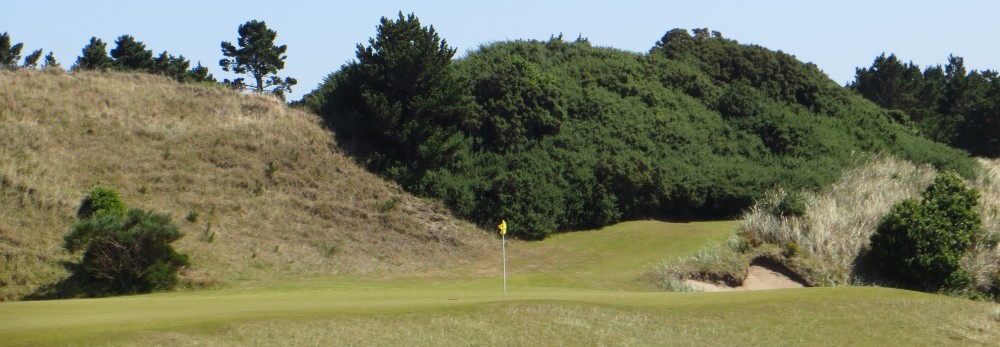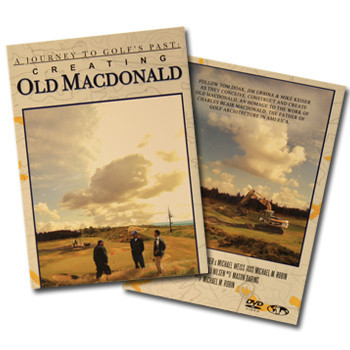 Two former editors of golf magazines of substance have put together ‘True Links’ an illustrated guide to the 246 Links golf courses in the world. Much in the vein of Larry Lambrecht’s ‘Emerald Gems’ and James Finegan’s ‘Scotland-Where Golf Is Great’ this is a thoughtful presentation of photos and supporting research on the links courses that define the game of golf.
Two former editors of golf magazines of substance have put together ‘True Links’ an illustrated guide to the 246 Links golf courses in the world. Much in the vein of Larry Lambrecht’s ‘Emerald Gems’ and James Finegan’s ‘Scotland-Where Golf Is Great’ this is a thoughtful presentation of photos and supporting research on the links courses that define the game of golf.
George Peper, a former editor of Golf Magazine, and Malcolm Campbell, a former editor of Golf Monthly, bring their expertise to the task of defining and documenting the active links courses around the world. Augmented by the vivid photography of Iain Lowe and other supporting photographers this book brings to life the grandeur of links courses from the British Isles and around the world and puts their individual stories in the context of the evolution of golf over the centuries.
Their premise is that links courses remain the soul of a game that has spawned over 30,000 golf playing grounds around the world. In the prologue they say, “Links golf is the game distilled to its core virtues. To walk beside the sea with a brisk breeze on your cheek and firm,sandy turf beneath your feet is to experience golf not only as it was hundreds of years ago but arguably as it should be today-a simple, beguiling game in need of no embellishment.”
If you asked the greatest players who ever played the game where they would prefer to play every day links courses like The Old Course at St. Andrews, Royal Country Down, Muirfield, and Ballybunion would come to their lips. The style of golf these courses demand bring out the deep seated talents of all players so the satisfaction of playing them well is very special.
Tom Watson, arguably one of the most successful players in Open Championships contested on links courses, slowly came to accept and embrace the demands of links golf. He describes what he discovered, “Don’t fight it…enjoy it. Solve the puzzle……Calculating the wind, allowing for the firm terrain, trusting your judgment and feel…that is the joy of playing a links. You need almost a sixth sense, an ability to adjust to all the conditions and somehow get your ball to travel the proper distance-whether through the air or along the ground. That is the essence of links golf. But the links giveth and the links taketh away. It can be cruel and beautiful in the same round, occasionally on the same hole, and once in a while on the same shot. When you figure out all the equations properly and the shot comes off as intended, nothing is more satisfying.” I have a feeling Phil has come to share this sentiment recently.
True Links begins by defining what distinguishes under 250 of the courses in the world as Links courses. The British Golf Museum in St. Andrews defines linksland as “a stretch of land near the coast…characterized by undulating terrain, often associated with dunes, infertile sandy soil, and indigeneous grasses as marram, sea lyme, and the fescues and bents which, when properly managed, produce the fine textured tight turf for which links are famed.” Add to this the quirky and sudden changes of wind and rain that seaside venues present and you have a chess game on grass against the elements and the higher order who choreographs them.
The result of this requirement of turf, terrain, and weather is that many of the most familiar and storied seaside courses are left off of the list of Links courses. Pebble Beach, Cypress Point, Royal Melbourne, Whistling Straits, Shinnecock Hills, and The Ocean Course at Kiawah are spectacular and challenging venues we equate with links golf but they lack either the firm sandy turf, the associated dunes, or the close proximity to the sea that strictly defines a links course and the brand of low to the ground golf associated with them.
The authors pay homage to the great architects that drew links courses out of the unique terrain nature presented in the British Isles. From Old Tom Morris to Harry Colt, James Braid, C.B. MacDonald, Alistar MacKenzie, Donald Ross, and A.W. Tillinghast they show the linkage of thought and design the great architects made studying the challenges of links courses and how they incorporated them into what would become the classic courses of the Golden Age of Course Architecture. This respect for links design feature continues to be seen in the contemporary work of Pete Dye, Tom Doak, Ben Crenshaw, Bill Coore and others in places like Whistling Straits, Bandon Dunes, Sand Hills, and Cabot Links.
The Crucible is a chapter dedicated to the grand daddy of them all, The Old Course at St. Andrews. Tracing it back to days of shepherds hitting rocks with their herding staffs, through Royal edicts against playing, to Rabbit Wars for the land’s usage, we get a sense of how the game evolved. Rules, equipment, course construction and maintenance were forged over centuries throughout Scotland. The standard of the number of holes, the routing, the cup, the ball, and all the rest came from trial and error and the guiding will of a series of individuals who sought to regiment and standardize the game they were playing.
What follows is a chapter called The Icons which gives vibrant imagery and context to the 25 links courses that have defined the game. Quirky courses-Lahinch and Ballybunion, original classics-Prestwick, North Berwick, and Rye, the full array of Royals-Aberdeen, Birkdale, St. Georges and Portrush , and the mysticals- Royal Dornoch and Royal County Down come to life as the authors explain the developmental history and unique characters of these pioneering links.
The Classics are the next level spawned by the Icons-they are the broader inventory we have come to know as links courses. Many are familiar, Machrihanish, Lundin Links, Waterville, Country Sligo, and St. Andrews Jubilee. Others less so The Island, Enniscronne, Gullane, Aberdovey, and Ballyliffen. From there they go to The Exotics covering the links courses outside the British Isles in The Neatherlands, Germany, New Zealand, Australia, and South Africa.
The journey ends with The Moderns, links courses that have come on line in the last forty years and reinvigorated the interest of golfers in the true tradition of the game. New entries in Ireland-Tralee, Doonbeg, and The European Club, Scotland-Kingsbarns, Castle Stuart, and Trump International, and North America-Bandon Dunes, Pacific Dunes, Old MacDonald, and Cabot Links are testimony that the influence of links golf design on the pleasure and enjoyment of golf continues.
Peper and Campbell argue that the future of golf remains in the hands of this movement. The demands of environmental responsibility and financial viability in developing new courses once again directs the architect’s attention to the minimalist approach to designing and maintaining a links course. Jim Arthur, an agronomist and promoter of natural links in Scotland put this way. “Lack of money has always been a great limiting influence on the making of mistakes. The poorest clubs have the best courses…in greenskeeping one should ask a farmer what to do and then go and do exactly the opposite.” The coast of Oregon and Nova Scotia, the sand hills of Nebraska, and down under in Tasmania Australia credence has been paid to this notion with fine result.
For an understanding of the place of links courses in the historical time line of golf, simple reminiscence of the places one has played, or in developing a bucket list of what is yet to come, True Links is a book that should have a place on your library shelf. This is a book you will reach for on a regular basis.
True Links
George Peper and Malcolm Campbell (2010)
October, 2013

 At the turn of the century golf course design in the United States was in a nascent and mundane state. Building a new course was pretty much about staking holes in straight lines on flat terrain with a few hurdle hazards to make it challenging. Thankfully with the immigration of golf “professionals” from Scotland and England in the early 1900’s the strategic thoughts and concepts of course design from the links courses of the British Isles started to infiltrate the thinking as new courses were built to meet a fast growing interest in golf in the states.
At the turn of the century golf course design in the United States was in a nascent and mundane state. Building a new course was pretty much about staking holes in straight lines on flat terrain with a few hurdle hazards to make it challenging. Thankfully with the immigration of golf “professionals” from Scotland and England in the early 1900’s the strategic thoughts and concepts of course design from the links courses of the British Isles started to infiltrate the thinking as new courses were built to meet a fast growing interest in golf in the states.







